The idea of trading frozen products originated in America in the early 20th century, and it wasn’t until the 1950s, with the widespread adoption of refrigerators in most households, that frozen foods became commonplace. Today, beyond pickling and marinating vegetables, every home cook can preserve any type of vegetable.
In this article, we’ll explain in detail how to freeze bell peppers for winter.
Table of contents
What Are the Benefits of Freezing Fresh Peppers?
Bell peppers are rich in vitamins C, B, PP, and A, which boost immunity, strengthen capillary walls, and neutralize free radicals in the body.
When frozen correctly, all the beneficial properties of the peppers are preserved. In autumn, vegetables are significantly cheaper than in winter, and you can be confident in their excellent quality.
Preparation
For freezing, you’ll need plastic containers with tight-fitting lids, zip-lock bags, or regular plastic bags. To prevent the vegetables from absorbing odors from other foods in the freezer, it’s best to place them in multiple plastic bags and tie them securely.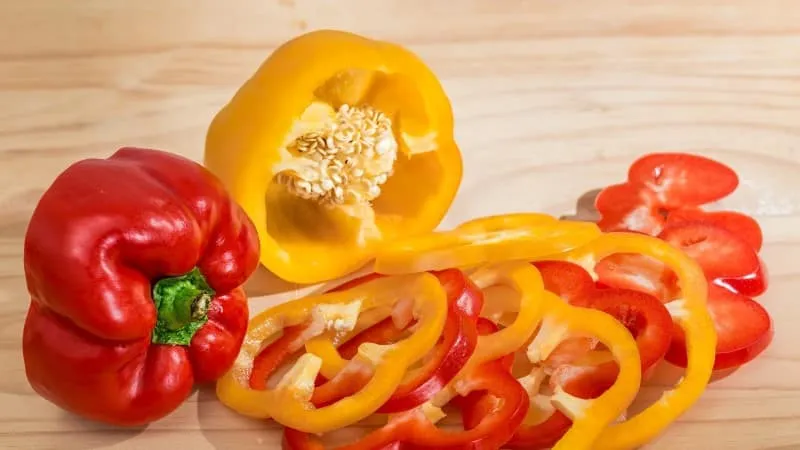
For freezing, choose fresh, large, undamaged peppers. Vegetables with thick walls freeze best. Wash each pepper thoroughly, remove the stem, seeds, and membranes. Then, dry them completely—preferably by laying them out on a clean towel. After this, the peppers can be frozen whole or sliced (depending on the recipe).
Freezing Methods
How you freeze bell peppers for winter depends on the dish you plan to use them in.
Freezing Whole Bell Peppers
Once the peppers are prepared and dried, place a cloth napkin or a special plastic tray at the bottom of the freezer. Stack the peppers one inside another in a pyramid shape, cover with a cloth, and leave for two days.
After freezing, transfer the vegetables to sturdy plastic bags or specialized freezer containers.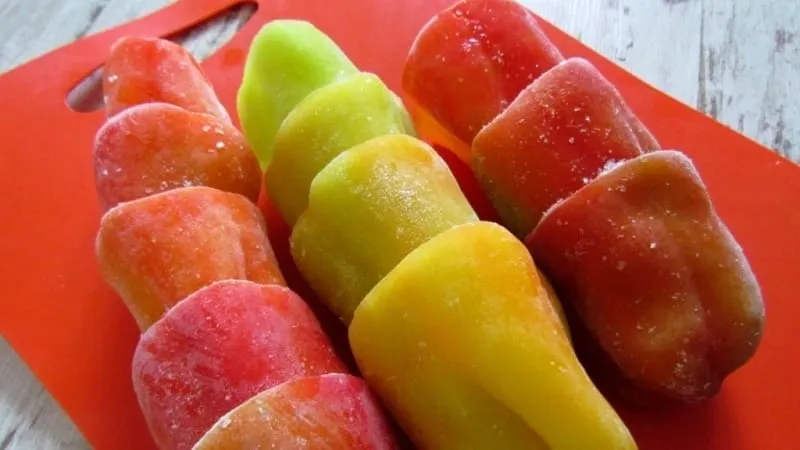
Diced or Sliced
Cut the prepared peppers lengthwise into halves. Slice each half crosswise into strips, then dice the strips. Place the chopped vegetables into freezer bags and freeze for two hours.
Afterward, shake the bags to prevent the pieces from clumping together, then return them to the freezer for long-term storage.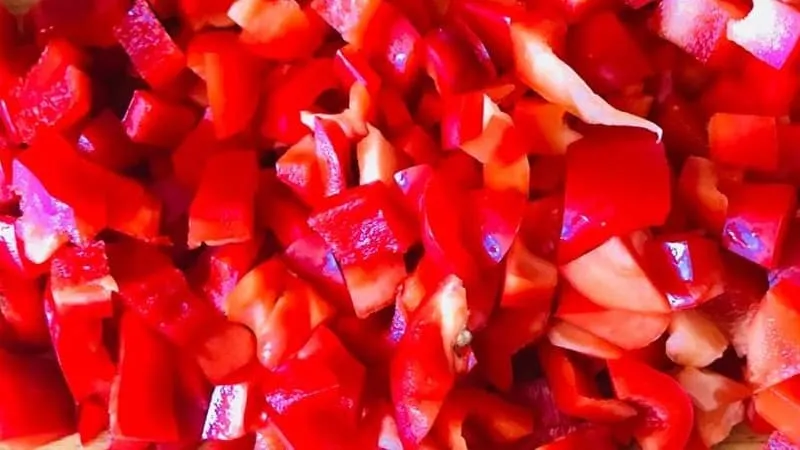
Freezing Roasted Sweet Peppers
Grease a baking tray with vegetable oil, arrange the washed, deseeded, and halved peppers on it, and roast in the oven at 180–200°C for 35–40 minutes.
Then, transfer them to a pot, cover tightly with a lid, and let sit for 15 minutes. After this, peel off the skins, cut into pieces, and place in a freezer container. Store in the freezer.
How to Freeze Peppers Stuffed with Meat, Rice, or Vegetables
Before freezing, blanch the prepared peppers in boiling water for about 1 minute. This will soften them, making it easier to stuff them tightly.
Choose the filling according to your taste:
- For meat stuffing, add chopped onion, garlic, carrots, and spices.
- For rice-stuffed peppers, pre-cook the rice in salted water, then mix it with vegetables and spices.
- For a fully vegetarian option, sauté shredded onion, carrots, and cabbage with spices in vegetable oil. Stuff the peppers with the filling and freeze on a tray for 24 hours.
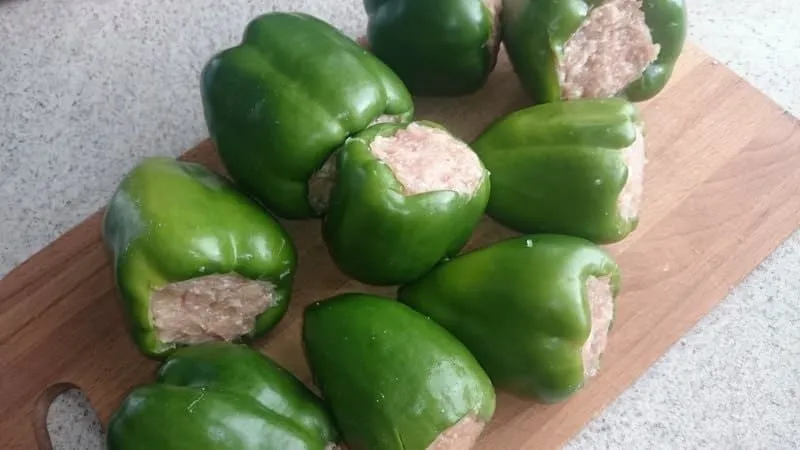
After freezing, transfer the stuffed peppers to freezer bags and store them in the freezer.
Freezing with Dill and Parsley
For 2 kg of peppers, you’ll need 150–200 g each of dill and parsley.
Preparation:
- Wash the herbs, soak in cold water for 10–15 minutes, and dry with a towel.
- Wash the peppers, remove seeds and stems, and slice into strips or cubes. Chop the herbs finely.
- Spread the peppers in a thin layer on one tray and the herbs on another. Freeze for 24 hours.
- Mix the peppers and herbs evenly, portion into bags, and store in the freezer.
Freezing Bell Pepper Lecho
For this recipe, you’ll need 2–3 peppers each of yellow, red, and green, plus 3 large tomatoes.
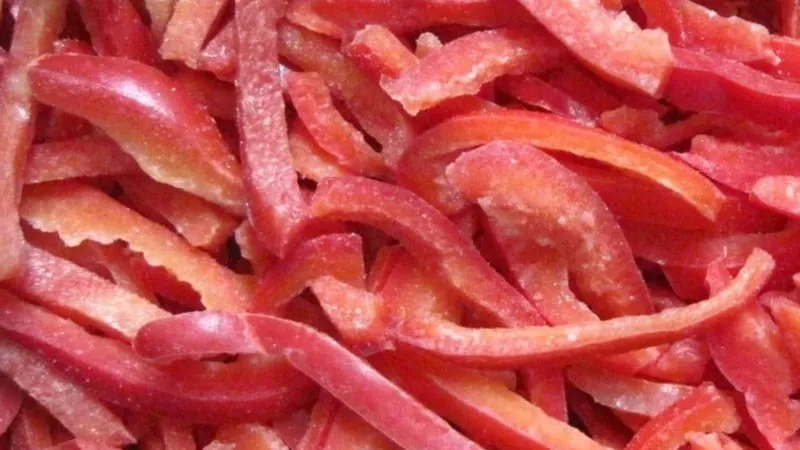
Preparation:
- Wash and dry the vegetables. Deseed the peppers. Blanch the tomatoes in boiling water and peel them.
- Cut the vegetables into strips, mix gently (to avoid crushing the tomatoes), and distribute into freezer bags or containers.
- Seal the containers tightly and place in the freezer.
- After a few hours, shake the containers and return them to the freezer for long-term storage.
Mixed Vegetables for Stew
For this method, use peppers of different colors.
Preparation:
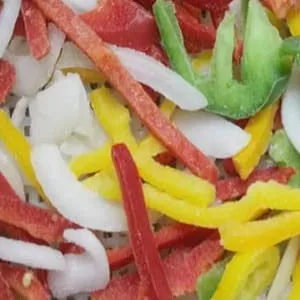
- Slice the peppers into strips (lengthwise or crosswise).
- Line a cutting board with plastic wrap, arrange the sliced peppers in a thin layer, and freeze for a few hours.
- Transfer the frozen peppers to a plastic bag or container, seal tightly, and store in the freezer.
No need to thaw before cooking.
Freezing Temperature and Storage Time
Freezing at –18 to –20°C preserves the peppers’ nutrients, color, and flavor.
When frozen properly, they can be stored for up to 12 months.
How to Use Frozen Peppers
Use frozen peppers just like fresh ones: in pizza, vegetable stew, sautéed peppers with onions and carrots as a meat side dish, baked meat with vegetables, casseroles, or omelets. Add to soups 10 minutes before serving.
No need to thaw beforehand.
Can You Refreeze Peppers?
Refreezing any vegetables is not recommended—they lose their nutritional value and taste. When defrosting the freezer, remove the vegetables for no more than an hour.
Ideally, transfer them to another freezer or place them on a balcony. If it’s summer and no alternative freezer is available, gather all frozen items in a large container (like a basin) and cover with a cloth to slow thawing.
Conclusion
To maximize your winter vitamin intake, freeze peppers in various forms: whole, sliced, diced, or stuffed with different fillings.
Cook them straight from frozen. To prevent odor absorption, pack them securely in freezer-safe bags or containers.







